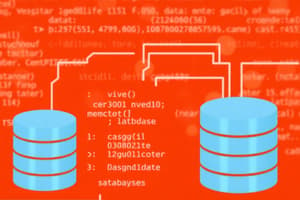Podcast
Questions and Answers
Data is a recorded description or measurement of something, and it can be structured, semistructured, or ______.
Data is a recorded description or measurement of something, and it can be structured, semistructured, or ______.
unstructured
Thinking before coding is important because it leads to accurate ______.
Thinking before coding is important because it leads to accurate ______.
results
A database is a container used to store organized ______.
A database is a container used to store organized ______.
data
A relational database organizes data into related ______.
A relational database organizes data into related ______.
Entities, attributes, and relationships are key components in the ______ modeling process.
Entities, attributes, and relationships are key components in the ______ modeling process.
Entity relationship diagrams (ERD) serve as a blueprint of how ______ sets relate in a database.
Entity relationship diagrams (ERD) serve as a blueprint of how ______ sets relate in a database.
SQL stands for Structured ______ Language.
SQL stands for Structured ______ Language.
Unlike other computer languages, SQL is a ______-specific language.
Unlike other computer languages, SQL is a ______-specific language.
The basic SQL SELECT statement is used to select ______ from a database.
The basic SQL SELECT statement is used to select ______ from a database.
SQL can be used to query, insert, update, and ______ data in a database.
SQL can be used to query, insert, update, and ______ data in a database.
The data returned is stored in a result table called the ______.
The data returned is stored in a result table called the ______.
To create a blank table, we use the ______ statement.
To create a blank table, we use the ______ statement.
The SQL statement ______ helps us to add data to our table.
The SQL statement ______ helps us to add data to our table.
The basic data types of SQL include Numeric, Character, Booleans, and ______.
The basic data types of SQL include Numeric, Character, Booleans, and ______.
The ______ clause is used to filter records in a SQL query.
The ______ clause is used to filter records in a SQL query.
A ______ character is used to substitute one or more characters in a string.
A ______ character is used to substitute one or more characters in a string.
The ______ operator is used to combine the result set of two or more SELECT statements.
The ______ operator is used to combine the result set of two or more SELECT statements.
Self joins are used to compare rows within the same ______.
Self joins are used to compare rows within the same ______.
The ______ ALTER statement is used to modify existing database objects.
The ______ ALTER statement is used to modify existing database objects.
Color psychology and color symbolism are important for creating effective ______ visualizations.
Color psychology and color symbolism are important for creating effective ______ visualizations.
Flashcards
Data
Data
Recorded information about something in the form of descriptions or measurements.
Structured data
Structured data
Data organized in a tabular format with rows and columns, like a spreadsheet.
Semistructured data
Semistructured data
Data with categories or tags to help organize it, but not as strictly organized as structured data.
Unstructured data
Unstructured data
Signup and view all the flashcards
Why think before coding?
Why think before coding?
Signup and view all the flashcards
Database
Database
Signup and view all the flashcards
Data modeling
Data modeling
Signup and view all the flashcards
Relational database
Relational database
Signup and view all the flashcards
Entity
Entity
Signup and view all the flashcards
SQL
SQL
Signup and view all the flashcards
Result-set
Result-set
Signup and view all the flashcards
CREATE TABLE Statement
CREATE TABLE Statement
Signup and view all the flashcards
INSERT INTO Statement
INSERT INTO Statement
Signup and view all the flashcards
SQL Data Types
SQL Data Types
Signup and view all the flashcards
Temporary Table
Temporary Table
Signup and view all the flashcards
WHERE Clause
WHERE Clause
Signup and view all the flashcards
IN Operator
IN Operator
Signup and view all the flashcards
Wildcard Characters
Wildcard Characters
Signup and view all the flashcards
Subqueries
Subqueries
Signup and view all the flashcards
SQL JOIN
SQL JOIN
Signup and view all the flashcards
Study Notes
Data and Types of Data
- Data is a recorded description or measurement.
- Three types: structured (tabular), semi-structured (categories/tags), unstructured (text-heavy).
Importance of Planning Before Coding
- Accurate results.
- Efficiency.
- Reduced rework time.
Databases and Data Modeling
- A database is a container for organized data.
- Data modeling organizes and structures information into related tables, representing business processes and their relationships.
Relational Databases
- Relational databases organize data into related tables.
- Data stored as tables related to each other.
Entities, Attributes, and Relationships
- Entities are things, people, places, or events.
- Attributes are characteristics or properties of entities.
- Relationships show how entities interact.
Entity-Relationship Diagrams (ERDs)
- ERDs are blueprints for database relationships.
- Components: entities, attributes, and relationships.
Structured Query Language (SQL)
- SQL is a specialized language for interacting with databases.
- Used for querying, inserting, updating, and modifying data in a database.
SQL in Databases
- Data manipulation within databases, including: read/retrieve, write, update.
- SQL can translate and is dialect-specific.
Basic SQL SELECT Statements
- SELECT statements retrieve data from a database.
- Retrieving data into a result set or table.
Data Table Creation
- Creating new tables improves modeling and prediction.
- Aids in creating dashboards and visualizing data.
- Easier to extract data from other sources.
SQL Data Insertion
- Inserting data into tables using INSERT INTO.
Basic SQL Data Types
- Types include numeric (integers, decimals), character, and boolean.
Temporary Tables
- Temporary tables are for faster queries than creating real tables.
- Useful for joining and subsetting data.
- Deleted when the session ends.
Filtering Data using WHERE Clause
- Filtering data: using operators like equal, greater than, less than, between, not equal.
- Used to select specific records based on conditions.
Advanced Filtering Techniques
- Using IN operator (multiple values) or OR, AND, and NOT operators to filter with multiple conditions.
Filtering with Wildcards
- Wildcard characters (e.g., % or _) can help find patterns in data.
Data Sorting
- Sorting data is important for better analysis.
Subqueries
- Subqueries are queries inside other queries allowing more complex retrievals of data.
SQL Joins
- Combining related data from two or more tables into a single result set.
- Types include Cartesian/Cross, INNER, LEFT, RIGHT, and FULL OUTER JOINs.
Data Visualization: Importance of Pre-Attentive Attributes; Color, Form, Spatial Postioning, Movement
- Data visualization emphasizes important information characteristics that immediately catch the viewer's attention.
- Using these, effective communication can occur.
Understanding Audience Needs and Analytical Ability
- Understanding your audience's needs and analytical skillset is critical to creating effective presentations.
- Tailoring the message is important for optimal impact.
Studying That Suits You
Use AI to generate personalized quizzes and flashcards to suit your learning preferences.
Related Documents
Description
This quiz covers the fundamentals of data types including structured, semi-structured, and unstructured data. It also dives into the planning needed before coding, the role of relational databases, and the use of Entity-Relationship Diagrams (ERDs) for database design. Test your understanding of these essential concepts in data management.



